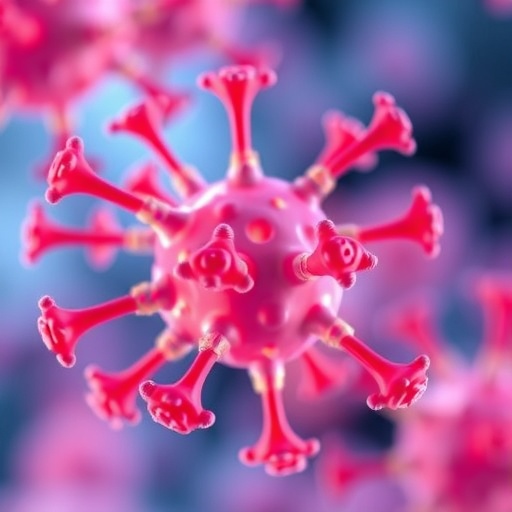In a recent groundbreaking forensic investigation published in the International Journal of Legal Medicine, researchers have scrutinized a tragic case of suicide induced by the combined toxicity of paroxetine overdose potentiated by benzodiazepines and antipsychotic drugs. This detailed scientific inquiry sheds new light on the complex pharmacological interactions and toxicodynamics that can escalate overdose lethality, thereby contributing crucial knowledge to forensic toxicology and clinical psychiatry. The study not only highlights the dangers of polypharmacy in vulnerable populations but also underscores the urgent need for improved therapeutic monitoring to prevent fatal poisonings.
Paroxetine, a selective serotonin reuptake inhibitor (SSRI) widely prescribed for depression and anxiety disorders, is generally considered to have a favorable safety profile compared to older antidepressants. However, the potential for severe toxicity in overdose situations is well-documented, especially when combined with other central nervous system (CNS) depressants. The reported case meticulously explores how the co-administration of benzodiazepines and antipsychotic drugs intensified the toxicological impact of paroxetine, culminating in fatal poisoning.
The study’s authors employed an exhaustive toxicological analysis correlating postmortem drug concentrations with known pharmacokinetic and pharmacodynamic properties. Benzodiazepines, commonly used for their anxiolytic and sedative effects, act primarily by potentiating gamma-aminobutyric acid (GABA) neurotransmission, leading to CNS depression. Antipsychotic drugs, frequently prescribed to manage psychosis and mood disorders, engage multiple neurotransmitter systems, including dopaminergic, serotonergic, and histaminergic pathways. Their overlapping sedative properties with benzodiazepines can produce profound respiratory depression and cardiovascular instability when taken in excessive doses or in synergy with other CNS depressants.
.adsslot_6XvcaHYehZ{ width:728px !important; height:90px !important; }
@media (max-width:1199px) { .adsslot_6XvcaHYehZ{ width:468px !important; height:60px !important; } }
@media (max-width:767px) { .adsslot_6XvcaHYehZ{ width:320px !important; height:50px !important; } }
ADVERTISEMENT
From a molecular standpoint, paroxetine displays a high affinity for the serotonin transporter (SERT), leading to substantial increases in synaptic serotonin concentration. Meanwhile, benzodiazepines bind allosterically to GABA_A receptors, increasing chloride influx and hyperpolarizing neurons to produce inhibitory effects. Antipsychotics vary in receptor affinity but typically antagonize dopamine D2 receptors and may exert additional effects on serotonin 5-HT2A receptors. The interference of multiple receptor systems and ion channel activities disrupts homeostasis and depresses vital brainstem functions regulating respiration and cardiovascular output.
The forensic analysis revealed elevated concentrations of paroxetine well above therapeutic and even established toxic thresholds, alongside significant levels of the benzodiazepine diazepam and the antipsychotic quetiapine. The comprehensive toxicological profile allowed the researchers to exclude other potential causes of death and concretely attribute mortality to the combined drug interactions rather than isolated substance toxicity. This reinforces the importance of holistic assessment in forensic examinations, especially in cases involving multiple psychoactive medications.
Clinically, the implications resonate strongly with current prescribing practices. Polypharmacy is commonplace in psychiatric treatment, especially in patients with complex or refractory disorders. While combination therapy may be therapeutically justified, the risk of unintentional overdose or suicide attempts facilitated by drug interactions demands vigilant patient education, prescription monitoring programs, and careful dosage titrations. This study acts as a cautionary tale emphasizing how inappropriate drug combinations may inadvertently enable fatal outcomes.
Further investigation by the authors delves into the metabolic pathways influencing the pharmacokinetics of the implicated drugs. Paroxetine is extensively metabolized by cytochrome P450 enzymes, particularly CYP2D6, which is subject to genetic polymorphisms affecting enzymatic activity and clearance rates. Benzodiazepines and antipsychotics also rely on hepatic metabolism, susc
eptible to similar variability. Co-ingestion can result in competitive inhibition or induction of metabolic enzymes, prolonging plasma half-lives and raising systemic concentrations unpredictably. These nuances highlight the complexity of overdose toxicity in polypharmacy and the necessity for personalized medicine approaches.
The study also offers insights into the neurotoxic effects of excessive serotonergic stimulation coupled with GABAergic and dopaminergic system suppression. This dual-edged disruption may accelerate neuronal apoptosis in vulnerable brain regions, impair autonomic regulation, and precipitate multi-organ failure. Postmortem examinations showed evidence of cerebral edema and pulmonary congestion consistent with acute toxic encephalopathy and respiratory compromise, strengthening the pathophysiological link drawn from toxicology results.
Innovatively, the researchers applied advanced quantitative analytical techniques, including liquid chromatography-tandem mass spectrometry (LC-MS/MS), allowing precise measurement of drug concentrations in biological specimens like blood, urine, and tissue samples. This methodology provided robust data permitting detailed toxicokinetic modeling and confirming the synergistic impact of the drug combination. Such technological progress in forensic analysis elevates the accuracy and confidence in cause-of-death determinations, which can have significant medico-legal consequences.
The tragic suicide underlines a larger epidemiological concern regarding suicide by pharmaceutical overdose, which remains a leading modality worldwide. According to recent statistics, antidepressants frequently feature in overdose cases due to their widespread availability. The addition of benzodiazepines and antipsychotics, often prescribed concurrently, presents a compounded risk. The study calls attention to the critical need for mental health professionals to balance therapeutic benefits against overdose risks, integrating comprehensive risk assessments into clinical decision-making.
Educational initiatives derived from these findings should target both healthcare providers and patients to reinforce awareness of drug interaction dangers and safe medication management practices. Continuous training in toxicological principles and updating clinical guidelines around polypharmacy will be pivotal in mitigating overdose fatalities. Moreover, integrating pharmacogenetic testing could refine dosing regimens and identify individuals at heightened risk for adverse reactions or poisoning.
The research also sparks discussion about the ethical dimensions of suicide prevention and the responsibilities healthcare systems bear in safeguarding at-risk populations. Strategies like restricting access to large quantities of medications, using blister packing, and implementing digital prescription monitoring can serve as preventive measures. Early intervention programs focusing on mental health support and crisis management might also reduce the incidence of intentional overdoses.
In conclusion, this landmark investigation elucidates how paroxetine overdose toxicity is significantly exacerbated by concomitant benzodiazepine and antipsychotic drug use, leading to fatal outcomes. Through rigorous toxicological and pathophysiological analyses, it advances our understanding of polypharmacy-related suicide mechanisms and emphasizes the indispensable role of integrative, multidisciplinary approaches in clinical care and forensic medicine. The findings resonate beyond the forensic field, catalyzing a vital conversation about medication safety, suicide prevention, and personalized treatment paradigms in contemporary psychiatry.
Subject of Research: Suicide by poisoning involving paroxetine overdose potentiated by benzodiazepine and antipsychotic drug interactions.
Article Title: Poisoning suicide due to paroxetine overdose toxicity aided by benzodiazepine and antipsychotic drugs.
Article References:
Florou, D., Fellow, R., Fragkouli, KE. et al. Poisoning suicide due to paroxetine overdose toxicity aided by benzodiazepine and antipsychotic drugs.
Int J Legal Med (2025). https://doi.org/10.1007/s00414-025-03570-7
Image Credits: AI Generated
Tags: antipsychotic drug toxicitybenzodiazepine interaction effectscentral nervous system depressantsclinical psychiatry implicationsforensic toxicology insightsmental health medication safetyoverdose lethality factorsParoxetine overdose riskpharmacological interactions studypolypharmacy dangersserotonin reuptake inhibitors safetytherapeutic monitoring improvements






